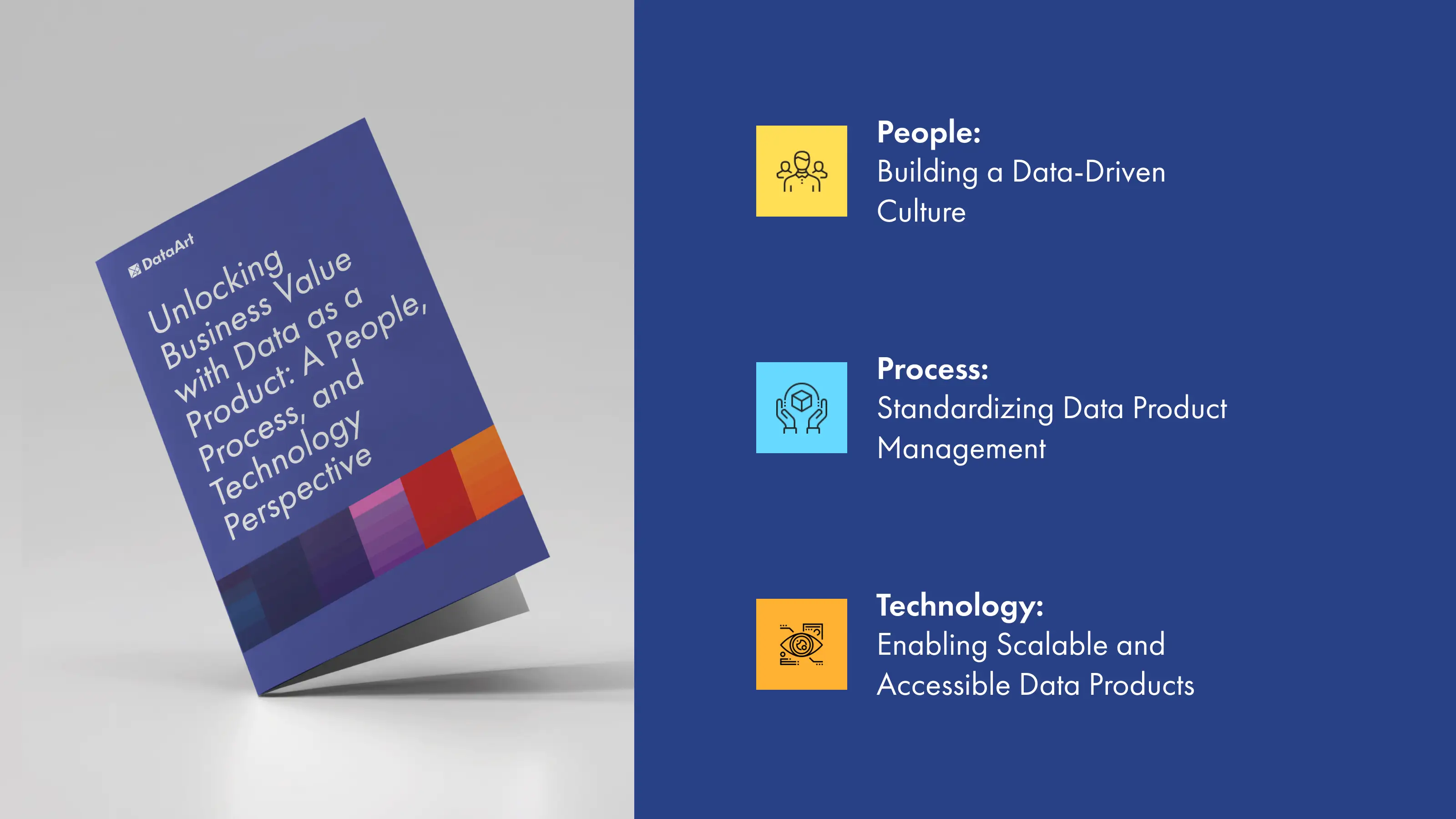Data as a Product for Better Decisions
Move from fragmented reports to structured, purpose-driven data. Treat data as a product to provide reliable insights, faster decisions, and more transparent accountability.

Data as a Product: Transform Your Data Product Development Strategy
Most companies have large amounts of data, but struggle to make it valuable and actionable. Traditional data management relies on IT-led projects, scattered dashboards, and static reports. This approach is slow, fragmented, and often fails to deliver timely insights.
Why Businesses Struggle with Data Management
A Data as a Product (DaaP) approach changes the perspective. Instead of treating data as a byproduct, it makes data a managed, consumable product with clear ownership and purpose. This is not just a technology change. It requires aligning the people who produce data with the people who use it for decision-making.
Without this approach, organizations face:
- Scattered Data: Information exists, but it is buried in silos and is hard to trust.
- Limited Usability: Data solutions often overlook context, thereby reducing their practical value.
- Slow Decisions: Preparing data takes weeks or months, delaying action.
- IT Bottlenecks: Every request becomes a custom project, slowing delivery.
- Weak Governance: Policies exist without accountability, reducing reliability.
A product-based data model addresses these issues. Data is designed, maintained, and delivered with a clear business purpose in mind.
What You'll Learn in This White Paper
This paper examines the weaknesses of traditional data management and shows a practical path forward. You'll learn:
- Why organizations struggle to make data usable and how treating data as a product changes outcomes.
- What it means to manage data as a product, from governance to day-to-day use.
- The role of a data product owner and why ownership matters for reliability.
- How to embed data as a product practices into workflows for faster, informed decisions.
- The tangible business impact of structured, product-oriented data management includes faster insights and lower costs.
FAQs
What does "Data as a Product" mean?
Data as a Product treats data as a structured asset with ownership, quality standards, and defined business use, rather than an operational byproduct.
Why adopt a Data as a Product approach?
A data as a product strategy ensures data is reliable, actionable, and available when needed, reducing delays and dependence on IT.
Who manages Data as a Product?
A data product owner oversees the lifecycle of the data product, from creation to delivery, ensuring quality and relevance.
How does Data as a Product improve decisions?
By structuring data as a product, organizations can access reliable insights more quickly, making informed and timely decisions.
Can smaller companies benefit from Data as a Product?
Yes. Data as a Product practices scale to any organization, helping maximize the value of data regardless of size.
About DataArt
DataArt works with businesses that demand more from their data. Our approach prioritizes clarity, reliability, and efficiency, helping organizations move beyond outdated, fragmented data systems.
We help companies create long-term, scalable approaches to data that work in real business environments. From governance to engineering, we focus on real-world usability, not abstract ideals.



